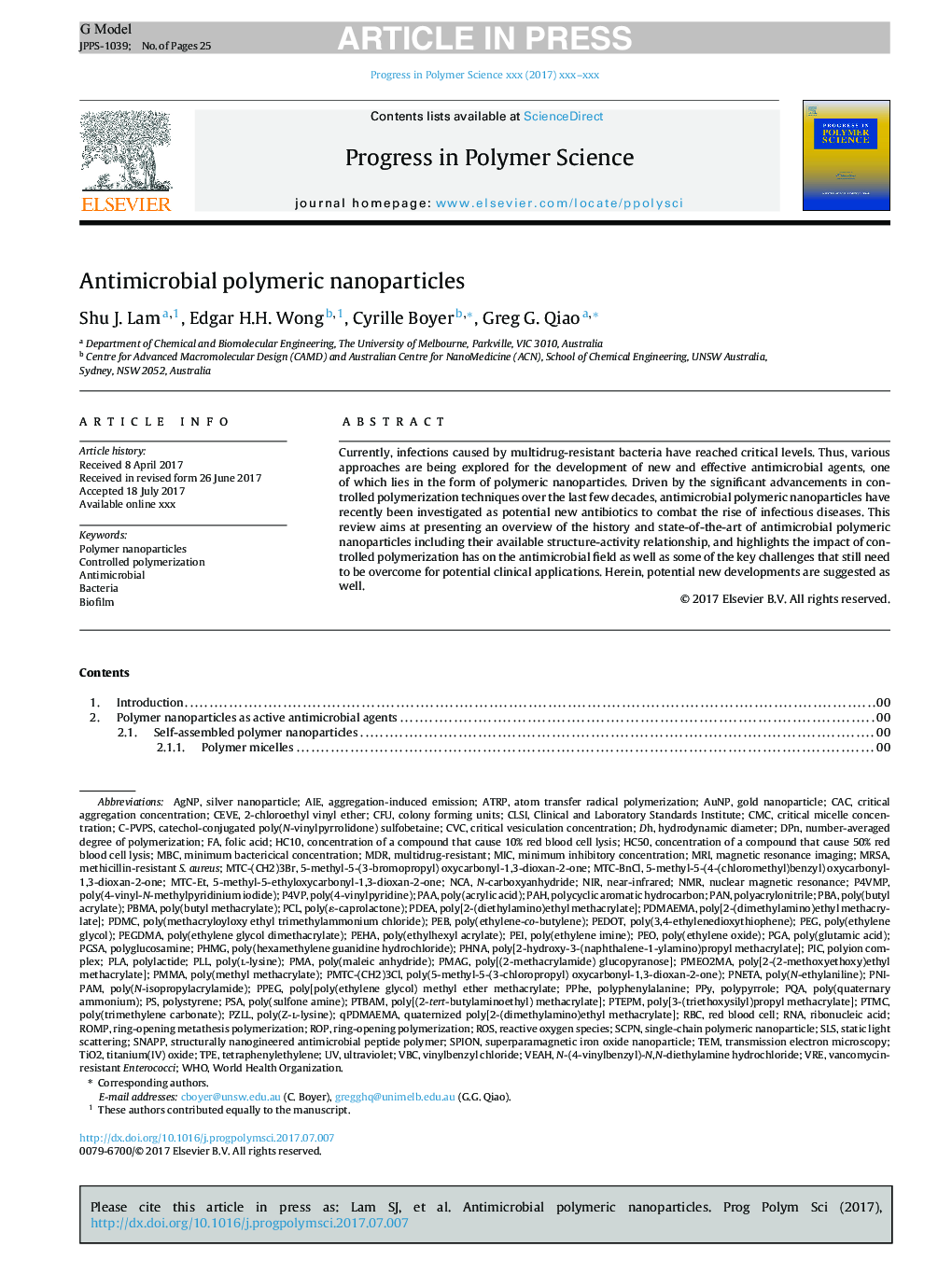| Article ID | Journal | Published Year | Pages | File Type |
|---|---|---|---|---|
| 7825951 | Progress in Polymer Science | 2018 | 25 Pages |
Abstract
Currently, infections caused by multidrug-resistant bacteria have reached critical levels. Thus, various approaches are being explored for the development of new and effective antimicrobial agents, one of which lies in the form of polymeric nanoparticles. Driven by the significant advancements in controlled polymerization techniques over the last few decades, antimicrobial polymeric nanoparticles have recently been investigated as potential new antibiotics to combat the rise of infectious diseases. This review aims at presenting an overview of the history and state-of-the-art of antimicrobial polymeric nanoparticles including their available structure-activity relationship, and highlights the impact of controlled polymerization has on the antimicrobial field as well as some of the key challenges that still need to be overcome for potential clinical applications. Herein, potential new developments are suggested as well.
Keywords
PEIPolylactideMDRCFUCMCPGAPCLPAHNIRPEDOTPolypyrroleATRPCACPPyP4VPPSAPAASLSTPEPLAAuNPMICPICPQARBCMBCPEBVREDPNCVCROPPHMGPLLPBACLSIAgNPNCAHC50PNIPAMROMPPDEAPDMAEMAVBCPTMCPolyglucosaminePDMCPoly(ethylene glycol dimethacrylate)PBMAPoly(N-ethylaniline)Poly[2-(dimethylamino)ethyl methacrylate]PGSASNAPPnuclear magnetic resonancePMAROSmethicillin-resistant S. aureusTetraphenylethyleneAIEMRSARNAribonucleic acidFolic acidUltravioletMRIVancomycin-resistant enterococciAggregation-induced emissionAtom transfer radical polymerizationTitanium(IV) oxideTemBacteriaBiofilmNMRMagnetic resonance imagingTiO2SPIONMinimum inhibitory concentrationWorld Health Organizationcritical aggregation concentrationcritical micelle concentrationhydrodynamic diameterAntimicrobialPANMultidrug-resistantClinical and Laboratory Standards InstituteTransmission electron microscopyGold nanoparticleSuperparamagnetic iron oxide nanoparticleSilver nanoparticlePolymer nanoparticlesNear-infraredN-carboxyanhydridePolycyclic aromatic hydrocarboncolony forming unitsVinylbenzyl chloridestatic light scatteringPolyacrylonitrilepoly(3,4-ethylenedioxythiophene)Poly(4-vinylpyridine)Poly(N-isopropylacrylamide)Poly(glutamic acid)Poly(butyl acrylate)Poly(butyl methacrylate)Poly(trimethylene carbonate)Poly(l-lysine)Poly(methyl methacrylate)PMMAPoly(ε-caprolactone)Poly(ethylene imine)poly(ethylene oxide)Poly(ethylene glycol)poly(acrylic acid)Polyion complexRing-opening polymerizationRing-opening metathesis polymerizationPEGPolystyrenepehaPEGDMAPEOControlled polymerizationWHOred blood cellReactive oxygen species
Related Topics
Physical Sciences and Engineering
Chemistry
Organic Chemistry
Authors
Shu J. Lam, Edgar H.H. Wong, Cyrille Boyer, Greg G. Qiao,
